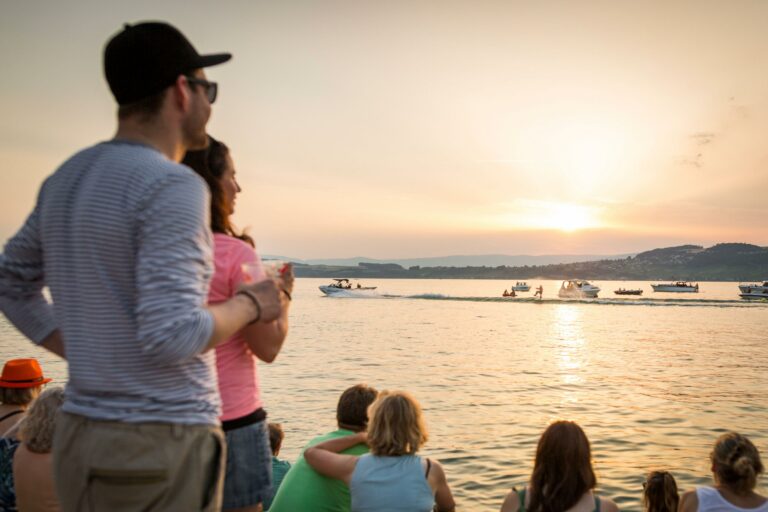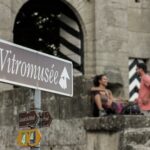This stage begins in Fribourg and ends in Romont, two towns steeped in history and tradition, and tells stories associated with Santiago of Compostela.
The city of the Zähringen and its exceptional historic heritage is worth the trip. This stage on the pilgrimage route of Santiago de Compostela includes the Saint Apollina Bridge, the old stone bridge over the Sarine recorded as far back as 1243 and its chapel (1147, also the date of the foundation of Hauterive Abbey). As it leaves Monterban, the path runs along an impressive row of ancient oaks, vestiges of the “old High Road between Fribourg and Bulle”. After you cross the wooden footbridge, the route takes you to Posieux, and then to Ecuvillens and its aerodrome. Don’t miss the chapel of Notre-Dame in Posat, built in 1680, halfway along the route. A path carved into the molasse leads to a footbridge over the Glâne. Pilgrims will not want to miss the altarpiece in the chapel of St-Jacques in Chavannes-sous-Orsonnens. As you arrive in Romont, you will pass La Fille-Dieu Abbey, a Cistercian monastery founded in 1268, whose church was entirely renovated in 1996. Next, you will reach the historic centre of Romont, where glass has pride of place in the collegiate and other churches, the streets and, of course, the Swiss Museum of Stained Glass and Glass Art!
Tip: take a stroll through Fribourg with a visit to the Old Town and St. Nicholas Cathedral. The Swiss Museum of Stained Glass and Glass Art in Romont is the highlight of a visit in the region.
Accessible by public transport: yes
Accessible by car: yes
A bit of history
The way of Saint James (Camino de Santiago) is a European walking itinerary that corresponds to the historic pilgrimage route to the tomb of Saint James in Spain. It crosses part of the canton of Fribourg.
It is said that the route begins on the threshold of your own home. There is therefore a multitude of itineraries. The Via Jacobi crosses Switzerland from East to West. Travellers generally journey on foot, but also by bicycle or on horseback. It takes several months to travel the 2,500 km to Santiago de Compostela.
The pilgrims traditionally brought scallop shells with them on their travels. They have become one of the symbols of the pilgrim, along with the staff, the saddlebag and the wide-brimmed hat. The scallop is the symbol found on the route's signposts. It can also often be found in the architecture. Sanctuaries dedicated to Saint James and representations of the saint abound on Via Jacobi. The Camino de Santiago was named the first European cultural route in 1987.
Saint James was one of the twelve apostles of Christ. According to tradition, his body was carried by boat to Galicia, where he was buried. A church was built there, which contained his remains and became a place of pilgrimage. Piety was a prominent feature of the Middle Ages. In the 12th century a monk described the routes in what became the earliest guidebook.
The Reformation brought this craze to an end. Later, the authenticity of the relics was questioned. The Church currently speaks prudently of the "Saint James memorial". The route, however, is becoming increasingly popular.
Every year, nearly 300,000 people are drawn to the journey. While everyone is looking for something, their motives are as varied as the walkers themselves. The hospitality service has established that 54% of visitors to the route have religious motives and 40% other spiritual motivations. People even talk of "Camino therapy"!
Information
Office du tourisme de Romont et sa région
Rue du Château 112
Case postale 86
1680 Romont
Information
Fribourg Tourisme et Région
Place Jean-Tinguely 1
Case postale 448
1700 Fribourg
Properties of the itinerarie
Type of activity: Sports
Difficulty: Moderately difficult
Duration: 07:20
Distance: 28 km
Ascent/Descent: +501m / -359m
Altitude min./max.: 571m / 765m
 2026 IIHF Ice Hockey World Championship
2026 IIHF Ice Hockey World Championship 






























